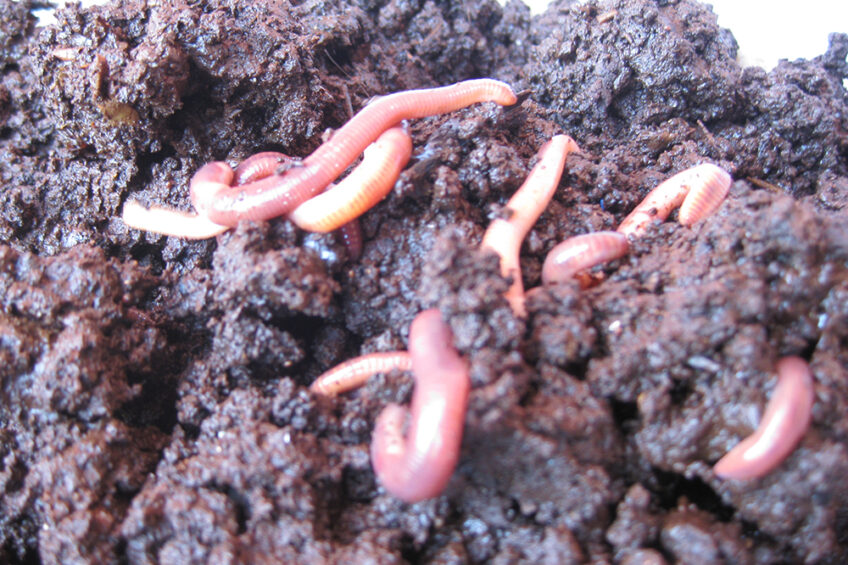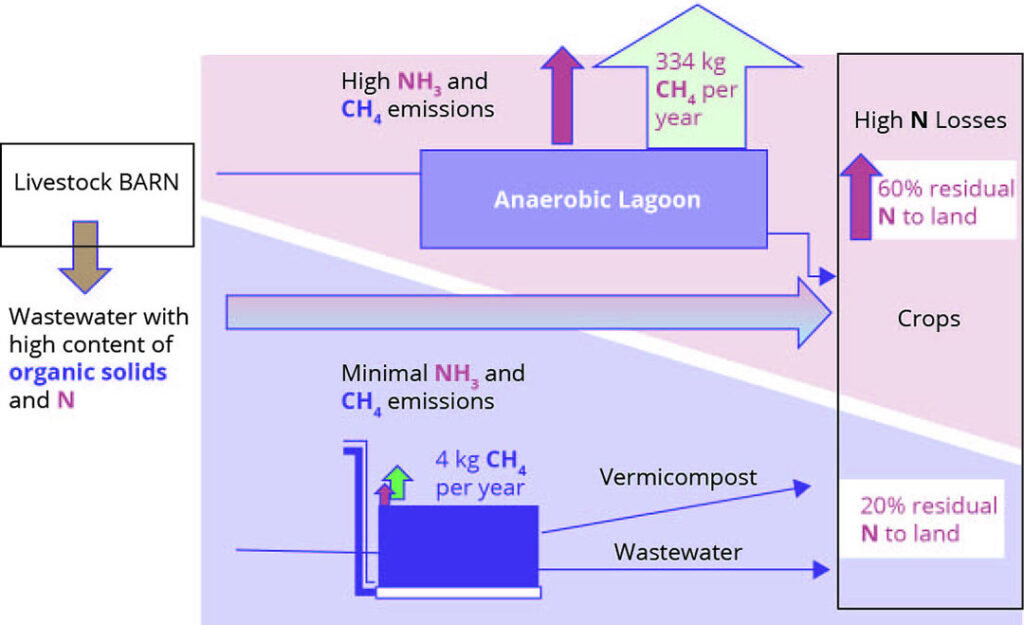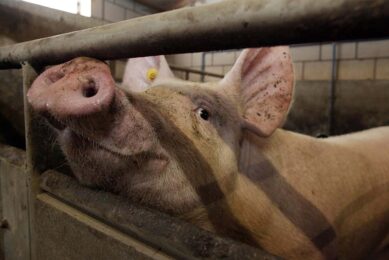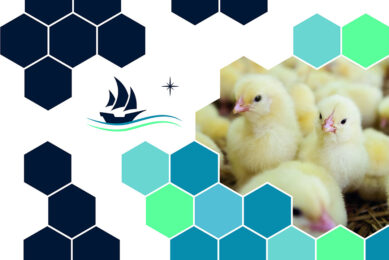How vermifiltration technology lowers methane emissions

Vermifiltration of dairy wastewater demonstrated to be a useful tool to mitigate methane emissions, regulate excess nutrients and improve water quality at dairy farms.
Reducing ammonia emissions from dairy operations is critical to achieving environmentally sustainable animal production that will benefit producers and society at large. In the dairy sector, the storage of manure is a significant source of both agricultural CH4 and N2O emissions. Anaerobic lagoons are common storage systems and the primary source of GHG emissions, as they provide anaerobic conditions ideal for CH4-producing microorganisms and are also a source of N2O and NH3 emissions. Manure nutrients can be recovered and used for crop production using solid-liquid separation, where manure nutrients are removed and/ or treated with a variety of technologies to generate value-added products. On the other hand, management that allows the reuse of dairy wastewater provides a potential means for farmers to reduce the demand for high-quality water.
Studies show that little is known about GHG emissions from vermifiltration systems. In addition, most vermifiltration studies have focused on small-scale laboratory experiments and short-term observations on the efficiency of removing organics and nutrients from wastewater.
Evaluating the systems
In this study, researchers monitored a commercial vermifiltration system for one year, quantifying the CH4 emissions of a dairy vermifiltration system as compared to anaerobic lagoon CH4 emissions. The study also addressed vermifiltration effects on the quality of wastewater. To evaluate how the two systems work, methane fluxes and wastewater removal rate of volatile solids, N species, salinity, major ions, and trace elements were monitored for 12 months.
How a vermifiltration system works
A vermifilter serves simultaneously as a solid-liquid separator, a treatment system for wastewater and separated solids, and a nutrient recovery technology. Vermifiltration offers the opportunity to reduce dairy GHG emissions (both N2O and CH4), remove organics and excess nutrients from wastewater, increase flexibility in water use, avoid odours, and recover the manure nutrients in the treated wastewater and vermicompost. The practice consists of spreading wastewater over a filtering system containing earthworms – using the joint action of earthworms and microorganisms to aerobically treat the wastewater. Although microorganisms biochemically degrade the organic waste, the earthworms aerate and fragment the substrate and modify its physical and chemical characteristics, promoting microbial activity and decomposition. The technique doesn’t produce sludge but vermicompost, which has beneficial effects on soils and crops. Vermicompost is a source of plant macro-and micronutrients, increases soil microbial biomass and diversity, enhances soil health, and has the potential to sequester carbon.
Reducing methane emissions
Researchers found methane emissions from the vermifilter substantially lower than emissions from the lagoon throughout the year (Figure 1). Over a year, the vermifilter emitted 97% less CH4 than the lagoon over the same unit area and 99% less CH4 at the full-size scale. The vermifilter reduction of the lagoon CH4 flux density ranged between 89% and 100%. Estimated annual emissions of CH4 from the lagoon were 253,854 kg CH4 compared to 2970 kg CH4 from the vermifilter and the additional 308 kg CH4 from the solids separated by the separator in the vermifiltration system. In one year, the full-size vermifilter system could reduce CH4 emissions by 6264 t CO2eq. The vermifilter system methane conversion factor was much lower than the 77% of the lagoon system. The lower vermifilter CH4 emissions were mainly due to a lower emission rate per unit area (CH4 flux density). In addition, the monthly tilting of the vermifilter increased porosity and aeration to eliminate conditions generating CH4 emissions.
Figure 1 – Comparison of the vermifilter and the anaerobic lagoon CH4 emissions (The red line is the reduction in CH4 emissions (%) of the vermifilter compared to the anaerobic lagoon).

Improved wastewater quality
The effect of the vermifilter on water quality not only determines the residual capacity of treated wastewater to emit GHG gases and pollutants, but also to provide nutrients to crops when land applied. During the research period 2019–2020, vermifiltration reduced wastewater NH3 concentrations by 97% and total N by 84%. The volatile solids left in treated wastewater determines its capacity to produce further CH4 emissions. On average, the vermifilter system removed 87% of the volatile solids from the wastewater; the reduction was continuous during the year and ranged from 77% to 96%. The vermifilter removed most of the N from the wastewater, and this was transformed into benign N2 gas through denitrification.
The vermifilter removed additional constituents from the dairy manure wastewater: phosphorous was reduced by 84%, total dissolved solids and electrical conductivity decreased by 42% and 48%, respectively. There were also reductions from the wastewater in most major ions and all trace elements.
Besides the benefit of methane reduction, the vermifilter recovered in both the treated water and vermicompost 20% of the initial N that can be applied to crops compared to the 60% of initial N provided by water from the lagoon system (Figure 2). The improved quality of the treated wastewater relative to the lagoon increases the options for recycling treated water that could result in the reduction of the farm’s demand for high-quality water.
Figure 2 – Overview comparing the vermifilter and the anaerobic lagoon system.

Factors influencing methane and ammonia emissions
Determining methane or ammonia emissions from cattle operations is complicated by the multifaceted nature of the factors regulating the volatilisation process, such as manure management, ambient temperature, wind speed, and manure composition and pH. In addition, quantifying methods needs the appropriate application, considering the advantages and disadvantages of each method. Floor material or design, and manure collection frequency are also factors mentioned in most studies. Dietary composition or use of additives also plays a key role in reducing emissions, for example, most research work shows that reducing crude protein concentration and ruminal protein degradability are powerful tools for reducing N excretion, and whole-farm ammonia emissions.
In conclusion, vermifiltration offers the opportunity to reduce dairy GHG emissions (both N2O and CH4), remove organics and excess nutrients from wastewater, increase flexibility in water use, avoid odours, and recover the manure nutrients in the treated wastewater and vermicompost.
Article is based on the research paper “A vermifiltration system for low methane emissions and high nutrient removal at a California dairy” The full paper can be accessed in the Bioresource Technology Reports Volume 18, June 2022.






